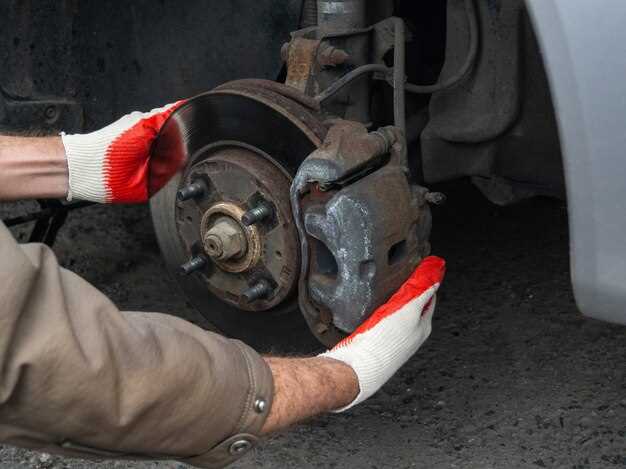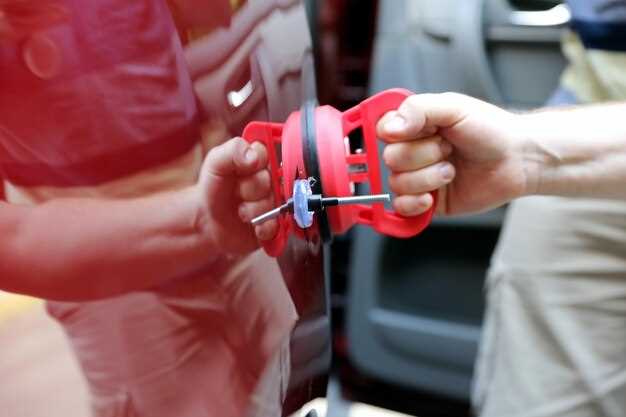
How to check your brakes for wear

Proper inspection of your vehicle’s brakes is crucial for maintaining safety on the road. Over time, brake components can wear down due to regular use, leading to decreased performance and potential safety hazards. Understanding how to check your brakes for signs of wear can help ensure that you address any issues before they escalate.
During a brake inspection, there are several key indicators to look for. Listen for unusual sounds such as squeaking or grinding, which often signal that the brake pads may be worn and need replacement. Additionally, observe the thickness of the brake pads and rotors; worn pads typically measure less than a quarter of an inch and should be replaced promptly.
Another important aspect of brake inspection is to monitor your vehicle’s braking response. If you notice a soft or spongy brake pedal, it could indicate air in the brake lines or fluid leaks. Regularly checking your brake fluid level is also necessary, as low fluid may affect brake performance. By being vigilant about these factors, you can keep your braking system in optimal condition and enhance your driving safety.
Identifying Unusual Noises When Braking

Unusual noises when braking can indicate potential issues with your brake system that require immediate attention. Regular inspection of your brakes is essential to ensure safe driving conditions. Here are common sounds to listen for and what they may signify:
- Squeaking or Squealing: This sound often arises from worn brake pads. The friction material on the pads can become too thin, and a wear indicator may be making contact with the rotor.
- Grinding: A grinding noise typically signals that the brake pads are completely worn out, resulting in metal-to-metal contact with the rotors. This can cause significant damage to your braking system.
- Thumping: A thumping or pulsating sound might indicate an issue with warped brake rotors. This can lead to uneven braking and may require rotor replacement.
- Clicking: A clicking noise when braking could be a sign of loose hardware or components within the brake assembly, such as caliper bolts. This issue should be inspected immediately to prevent further damage.
- Hissing: A hissing sound may occur due to brake fluid leakage or air entering the brake lines. This significant problem could impair the effectiveness of your brakes.
Listening for these sounds during a drive can help in identifying problems early. If you notice any of these noises, it’s vital to conduct a comprehensive inspection or consult a professional mechanic to address the issue and ensure your safety on the road.
Evaluating Brake Pad Thickness and Condition
Inspecting brake pads is crucial for maintaining vehicle safety. Over time, brake pads wear down due to friction created during braking. Start by visually checking the pads through the wheel spokes or by removing the wheel entirely for a more comprehensive view.
Use a thickness gauge or simply measure with a ruler. New brake pads typically have a thickness of around 10 to 12 millimeters. If the thickness is reduced to 3 to 4 millimeters or less, it indicates that replacement is necessary. Additionally, check for uneven wear; if one pad is significantly thinner than the others, it may suggest issues with the brake caliper or related components.
Examine the surface of the pads as well. Look for cracks, glazing, or excessive wear patterns which can compromise braking performance. Dark, shiny surfaces may indicate overheating, while cracks could lead to brake failure. Keeping brake pads in optimal condition is essential for ensuring effective stopping power and overall safety on the road.
Lastly, consider the age of the brake pads. Even if the thickness seems adequate, older pads may not perform as effectively due to material degradation. Regular evaluations and timely replacements are key to maintaining both the effectiveness of the brake system and your driving safety.
Testing Brake Response and Vehicle Stopping Power

Regular inspection of your vehicle’s brake system is crucial for ensuring safety on the road. One of the most effective ways to assess brake performance is through testing brake response and vehicle stopping power. This can help identify potential issues before they lead to serious problems.
To begin, find a safe, quiet area with ample space to conduct the test. Accelerate the vehicle to a moderate speed, ensuring that you are aware of your surroundings. Once you reach a suitable speed, apply the brakes firmly but smoothly. Pay close attention to how the vehicle responds.
Assess the response: A healthy braking system should provide immediate and effective deceleration. If you notice a delayed response, this could indicate worn brake pads or issues with the brake fluid. Additionally, any unusual noises, such as grinding or squeaking, during braking should not be overlooked, as they often signify wear.
Evaluate stopping distance: Observe how quickly your vehicle comes to a complete stop. Under normal conditions, the stopping distance should be within a reasonable range. If you find that the vehicle takes longer than expected to stop, this may suggest that your brakes are not functioning optimally and require further inspection.
Safety considerations: Always prioritize safety when conducting this test. Avoid busy streets and ensure that no pedestrians are in the vicinity. Conducting these tests regularly can help maintain your vehicle’s stopping power, ultimately keeping you and others safe on the road.
In summary, testing brake response and stopping power is an essential part of regular vehicle maintenance. By being vigilant and performing routine inspections, you can catch potential issues early, ensuring safety and reliability when driving.